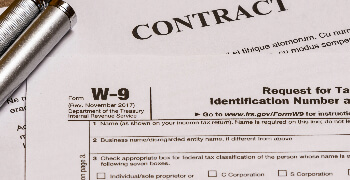
Simplify regulatory and tax compliance with automation
Make life simple: Use automation to simplify regulatory and tax compliance while enhancing customer satisfaction
“Taxes” is a word most people dread, and that’s true for business as well. Taxes are necessary but complex to handle, with so many variables across every locale, region, and geography globally. Compliance, regulations, and audit trails are required for almost everything and that means a ton of work for employees. Unless, of course, you use automation.
Automation of repetitive workflows means employees can focus their energy in areas that matter more to the organization. The IDC Employee Experience Buyer Perception Survey of November 2021, found that for every dollar organizations spend to improve the internal workforce experience, they are 70% more likely to see an increase in customer satisfaction. In fact, 37% of organizations participating in the IDC Future Enterprise Resiliency and Spending Survey, Wave 8, from September 2022, found a significant need to automate manual and repetitive work.
The digital world has enabled a bold new way for organizations to work, relying on technology to bring more information faster to the employee. This information combines multiple data sets, and changes up the way the business processes information, transactions, and reports progress. In the IDC Intelligent ERP FutureScape, 2023, it predicted that by 2028, “30% of employers will use autonomous processes to augment the shortfall in labor and by doing so will increase an organization’s agility, resilience, and performance.” And with the rise of digital technologies for business to business (B2B) and business to consumer (B2C), this can be a huge differentiating value factor for both the employee as well as the organization.
Automation opportunities in compliance and tax reporting
But where does the organization start trying to automate business processes? Typically, organizations start by automating more transactional-level items like receipt automation, preparing payments by matching purchase orders, receipts, and invoices. And, of course, tying this to “follow the money” makes it even easier to set up an audit trail. While these tactics are relatively simple, they underscore the importance of freeing the employee to do other activities like looking at trends in spending, and understanding the tax requirements by region, country, and even local areas in which the organization is doing business.
Tax compliance can be one of the hardest areas for an organization to understand and obey. For global businesses, there are sales and use taxes, as well as tax calculations for selling online, and these are subject to change based on each jurisdiction. For organizations moving to cloud ERP systems, multiregional regulations must be readdressed to ensure compliance overall. These complexities can be tough to navigate without the right automation tools.
Automate to reduce complexity
By automating more tax processes, organizations find they can reduce the complexities of tax activities. With so many tax jurisdictions, workflows, reporting, and auditing along with the continuous touch by employees, simplifying these processes with automation completely changes the employee experience. For instance, transaction-level detail by customer, by country, by locality, tied to international taxes and duties can be brought together by automation to simplify the complexity of these laws and processes.
In addition, organizations find with tax automation they can manage exemption certificates better, comply with use tax requirements, and avoid audit penalties. In fact, many auditors have found traceability and record keeping is much simpler and easier when the processes are automated and tied to the right data sets.
Lastly, when automation is used to manage taxes and compliance for the organization, the employee-process steps are reduced or removed, lowering the risk of human error, which creates more time for employees to manage and course-correct the business for better performance.
We all know death and taxes are the only certainties in life, so why not make taxes easier to manage and remove compliance uncertainty by automating the processes? Once you automate, there’s no going back. IDC finds organizations that automate can scale and grow their business faster, increase the speed of response to the customer — removing competition alternatives, and be more agile in its response. Why not remove the mundane, complex tax workflows by simplifying the processes with automation that is innovative? Make life simple.

Your competitors live by this annual report
Trusted by professionals, this valuable resource simplifies complex topics with clarity and insight.
Stay up to date
Sign up for our free newsletter and stay up to date with the latest tax news.













